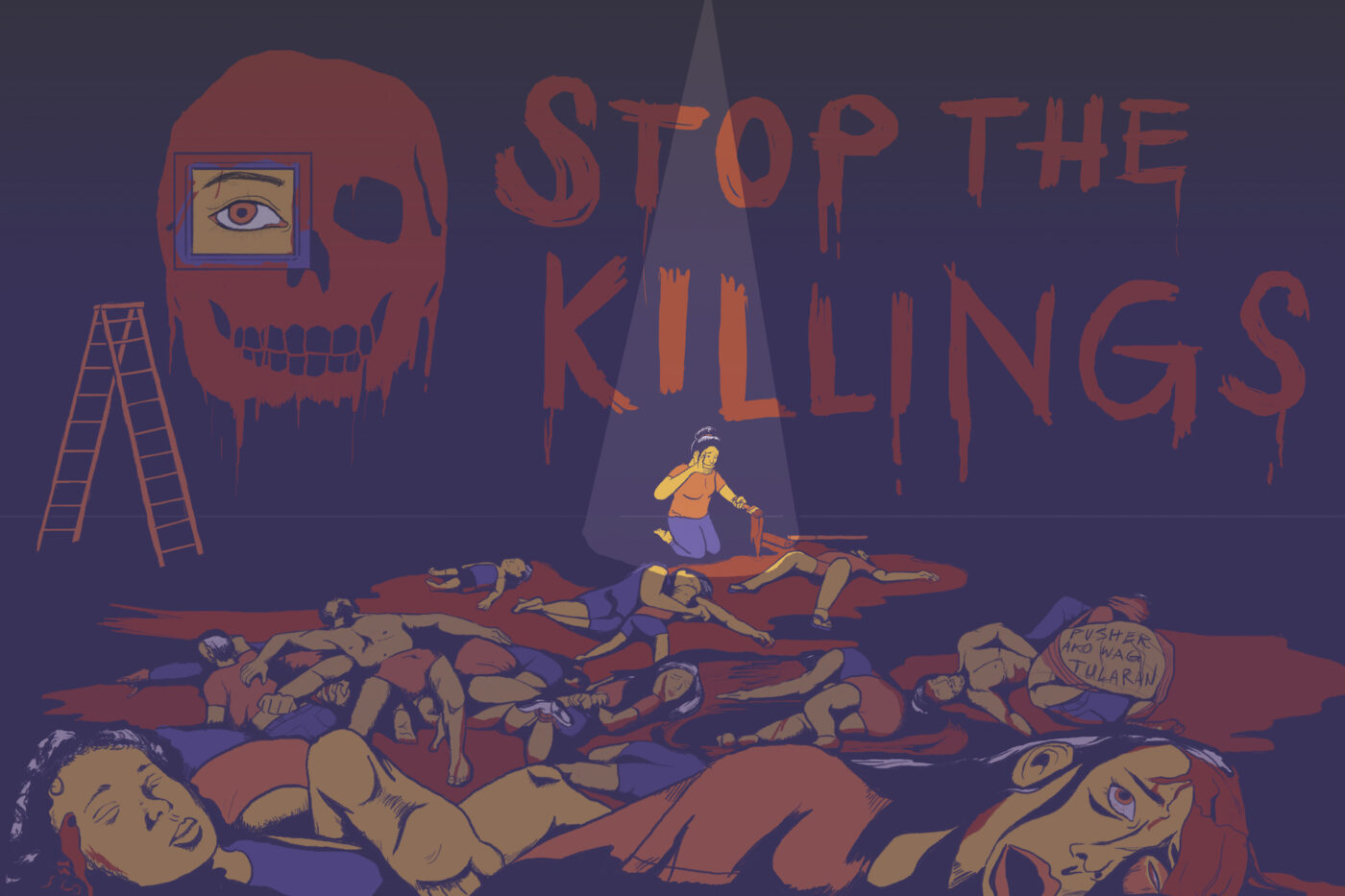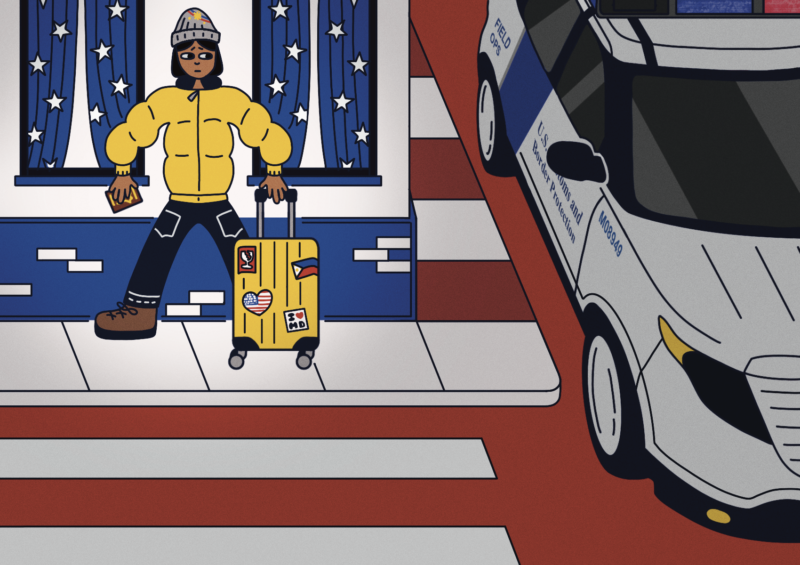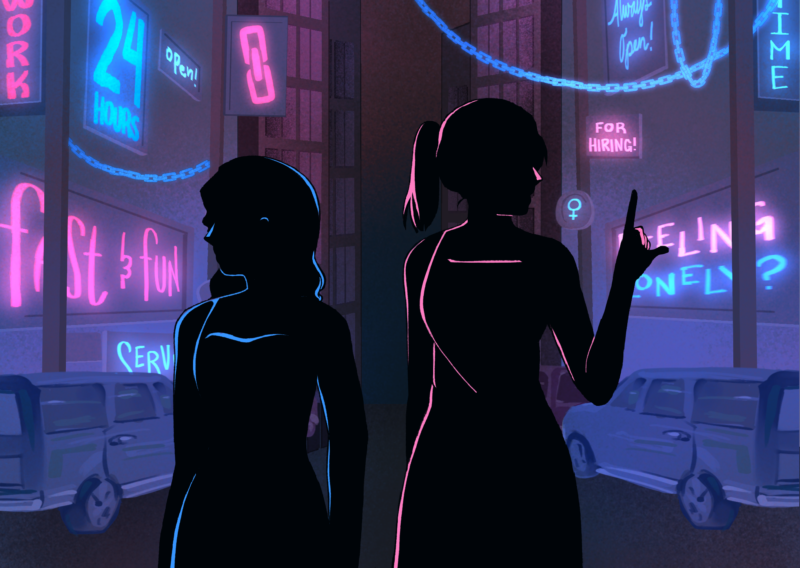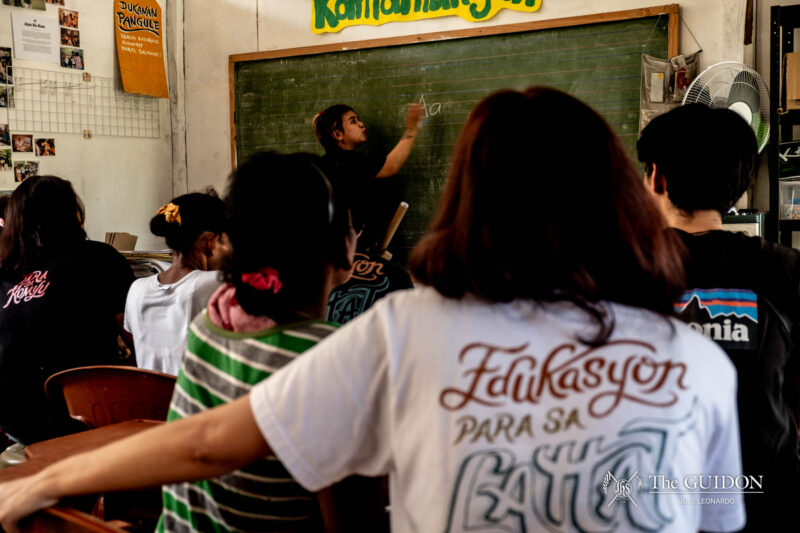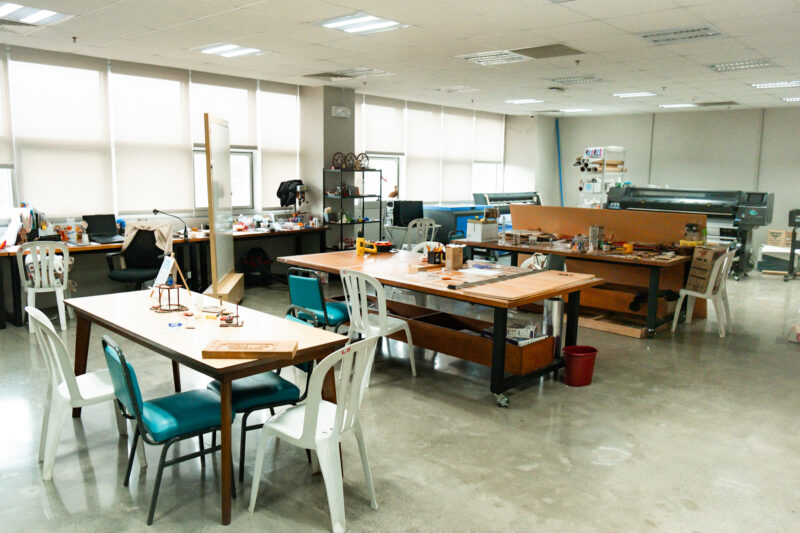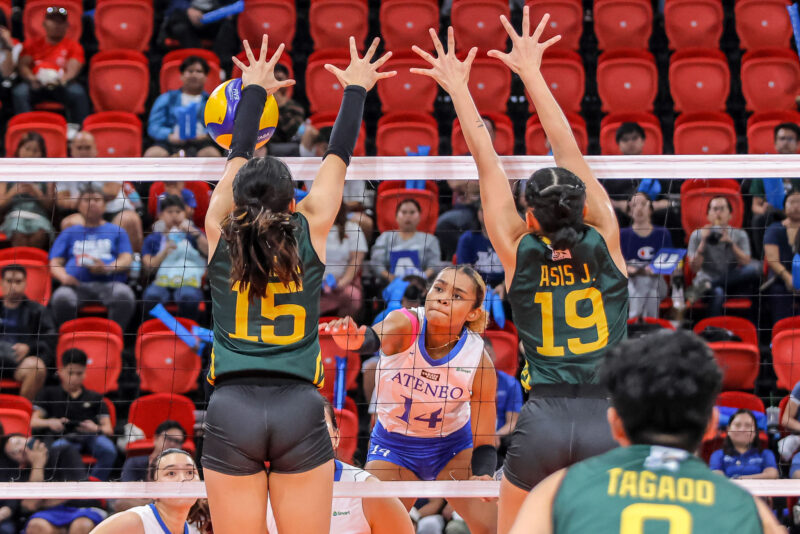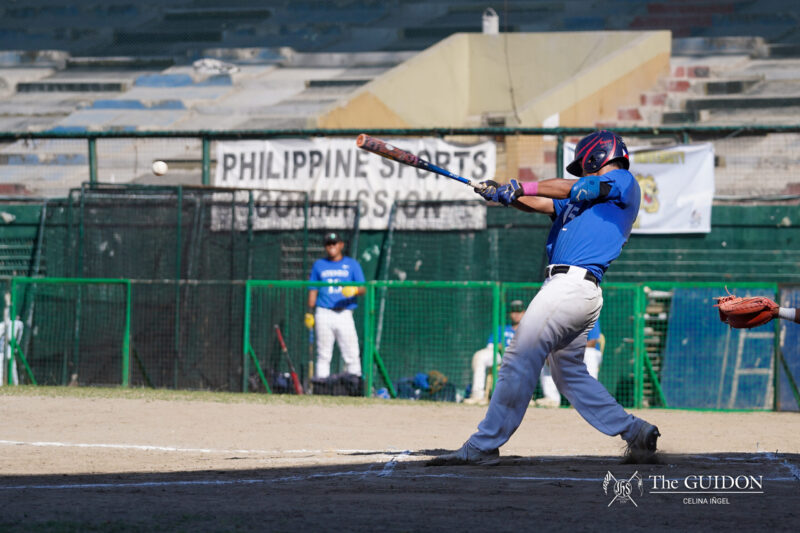In the iconic photo by Raffy Lerma, a woman clad in her house clothes cradles the bloody and lifeless body of her husband on a pavement, and a crime scene tape separates them from the bystanders who are trying to look away. The couple is the focal point of this picture, evoking emotions that one will similarly experience when looking at Michelangelo’s Pietà, a Renaissance sculpture depicting the Virgin Mary with the body of Jesus on her lap.
However, Lerma’s photo is real life, and the people in the photo are named Jennelyn Orales, and her deceased husband, Michael Siaron. The photo, seemingly bearing an emotive yet truthful view on the Philippines’ extrajudicial killings, had even landed the cover of the New York Times. Siaron, and Orales are only two of the many victims of President Rodrigo Duterte’s so-called “War on Drugs.”
Is this just another example of life horribly imitating art? For some Filipino artists, it isn’t. They go beyond imitation and reflection, and use their capabilities to speak up against the extrajudicial killings. Art now confronts life, or perhaps, the killing thereof in our country. With the administration’s current War on Drugs, art has been elevated into a crucial space for discourse among Filipinos. At the same time, the social turmoil has given artists a synonymous name: Protesters.
Artists speak
Among the many Filipino artists today who make it a point to protest against the extrajudicial killings is Nikki Luna, a visual artist who incorporates women’s rights in her War on Drugs-related works. Aptly enough, a feminist perspective is always appropriate in criticizing a president who trivializes issues such as rape and harassment.
Luna’s courage to confront the injustice did not happen without pressure. “There were people telling me to lay low on voicing out my opinion and reaction towards the War on Drugs and misogyny. […] My work had received rape threats via Facebook from various fake accounts who threatened not only to rape me, but my two-year-old daughter as well. This did not stop me though, I refuse to be silenced,” she says.
On the other hand, Floy Quintos, a renowned Filipino playwright, was also quick to write about the current situation through a poem. Entitled “Lamentation,” this ekphrastic poem he posted on his Facebook account was a direct reaction against the killing of Siaron. “It was quick, it flowed easily, it did not need coaxing,” he says of his writing of the poem.
Indeed, such a critical reaction is imperative to the situation. While a role for Filipino artists is to spark discourse for today, Quintos says that art “cannot cause revolution or drastic and significant change, and that [an artist’s] role is to bring beauty into the struggle, no matter the form.”
Similarly, Luna believes that although artists are more vocal now than ever, producing art that tackles political issues “is something [artists] have to go through on their own.” She says that, “when they are ready, when they truly open their eyes to reality, then they’ll have that urge to use their art as a vehicle for relevant messages.”
In the end, like Quintos, Luna hopes that her art “has some effect [towards people].” She says, “I only hope to engage [and] challenge [people’s views, and] make [them] reflect. Hopefully they think about where they stand.”
Discourse on discord
Filipinos have been using art as a form of social commentary since 1821, when Esteban Villanueva painted an image of the Basi Revolt of 1807, the bloody Ilokano uprising against the Spanish government. It was commissioned by the Spaniards to become a series of fourteen pieces of propaganda art, meant to dissuade revolutionaries from fighting back. But instead of suppressing further rebellion, the paintings became a symbol of hope for possible victory.
After many decades, art again took a political stance during the social upheaval caused by the Marcos dictatorship from 1972 to 1981. In particular, protest art gained a boost in popularity due to the social realism movement popularized in the 1970s by Kaisahan, a group of young artists who believed in the symptomatic power of art. Kaisahan emerged from the bowels of the artistic and journalistic censorship enforced during the Martial Law era.
Art critic Alice Guillermo describes the artistic movement in her book, Social Realism in the Philippines (1987): “During the Marcos regime, an observed cultural phenomenon was the emergence of protest art in various forms.” She continues by saying that art has “always reflected society and the conditions in which people live, at the same time that it has contributed to the process of social and historical change.”
The process of visual portrayal remains in the backbone of protest art, but the sentiment behind it goes far beyond painting what one can see. According to Guillermo, the focus is on “[waking] the socio-political consciousness of the people” and creating art that would spark awareness and change by “inspiring revolutionary fervor.” These works of art serve as a medium for discussion on prevalent social and political issues, with the ultimate goal of stirring the discourse of the Philippine nation.
Where the truth lies
Over the course of Philippine history, this mantle of stirring social awareness through art has been taken up by many great names, including the famous Juan Luna and his Spoliarium. His allegorical work was massively acclaimed in the art community across the world, but there was more to his motivations than that.
Eric Torres writes in an article for the National Commission for Culture and Arts, “It was not [just] a simple matter of gaining personal glory as an artist [for Luna]; it was also a matter of patriotic duty.”
This patriotic duty has withstood the test of time. Now that social unrest has once again emerged in response to the Duterte administration, the “artist’s burden” grows heavier. In light of the epidemic of fake news and political smoke screens, the Filipino nation is now looking at art to be a conduit of truth.
In his keynote speech for the recent National Writers Congress with the theme “Ang Panitikan sa Panahon ng Tokhang,” award-winning author Jose Dalisay Jr, PhD extols the virtue of veracity, no matter what form art takes: “It’s become almost cliche to say that [the artist’s] first response is to the truth. This is no truer than today, in this age of fake news, post-truths, and alternative facts. Someone has to figure out what really happened, who’s lying, and why.”
Dalisay continues, “The fact that we respond to the news today with consternation and skepticism only shows how difficult that task is.”
The shift towards protest art is a natural occurrence for the simple fact that truth is a function of art. Protest art is not about finding solutions or answering questions. Its strength lies in its ability to depict the sentiments and social consciousness of the Filipino people, whether it be uncensored photographs of the EJK victims, or the symbolic effigy of “Rody’s Cube,” a life-sized Rubik’s cube blending the faces of Duterte, Marcos, and Hitler, burning during the 45th Martial Law anniversary protests.
And while art is more than just self-expression as it is a critical space where artists thrive to create awareness and try to make a change, it is still in the effort of the audience to be moved by it, and form their own protests. While artists show and reflect on the abominable and the pressing concerns, the urgency is also upon Filipinos who are present in this time and space to make their voices known and to stand by their rights.

